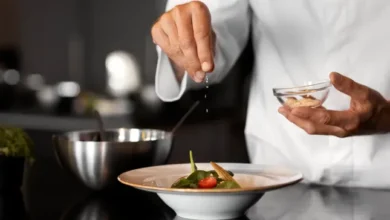Plicatured Nail: Causes, Symptoms, and Treatment Options

Introduction
Nail disorders can affect both the appearance and health of your nails, leading to discomfort and sometimes pain. One such condition is plicatured nail, a less commonly discussed but significant nail deformity. If you’ve noticed your nails curving inward or folding into the skin, you might be dealing with a plicatured nail.
In this comprehensive guide, we’ll explore what a plicatured nail is, its causes, symptoms, and effective treatment options to restore your nail health.
What Is a Plicatured Nail?
A plicatured nail is a condition where the nail plate folds inward, creating a concave or “folded” appearance. Unlike a pincer nail (where the nail curves excessively sideways), it typically involves a longitudinal folding, often leading to ingrown edges that dig into the surrounding skin.
This condition can affect one or multiple nails and may cause pain, inflammation, and even infection if left untreated.
Causes of Plicatured Nail
Several factors can contribute to the development of it, including:
1. Genetic Predisposition
Some individuals inherit a tendency for abnormal nail growth, making them more prone to conditions like them.
2. Trauma or Injury
Repeated trauma to the nail, such as stubbing a toe or wearing tight shoes, can alter nail growth patterns, leading to folding.
3. Improper Nail Trimming
Cutting nails too short or rounding the edges excessively can encourage the nail to grow into the skin, increasing the risk of them.
4. Fungal Infections
Onychomycosis (nail fungus) can thicken and distort the nail, sometimes causing it to fold inward.
5. Underlying Medical Conditions
Certain systemic diseases, such as psoriasis, lichen planus, or circulatory disorders, can affect nail structure and contribute to plicatured nails.
6. Aging
As we age, nails may become more brittle and prone to deformities, including it.
Symptoms of Plicatured Nail
Recognizing the signs of a plicatured nail early can help prevent complications. Common symptoms include:
- Visible folding or inward curving of the nail plate
- Pain and tenderness along the nail edges
- Redness and swelling around the affected nail
- Ingrown nail development if the fold digs into the skin
- Difficulty trimming the nail due to its abnormal shape
- Possible infection (if bacteria enter through broken skin)
Diagnosis of Plicatured Nail
If you suspect it, consult a dermatologist or podiatrist. They will:
- Examine the nail visually to assess the degree of folding.
- Review medical history to identify potential causes (trauma, infections, etc.).
- Perform tests (if needed), such as a fungal culture or biopsy, to rule out infections or underlying conditions.
Treatment Options for Plicatured Nail
Treatment depends on the severity of the condition. Here are some effective approaches:
1. Conservative Treatments (Mild Cases)
- Proper Nail Trimming: Cut nails straight across (not too short) to prevent further folding.
- Wearing Proper Footwear: Avoid tight shoes that put pressure on the nails.
- Warm Soaks: Soaking the affected nail in warm water with Epsom salt can reduce inflammation.
- Topical Antibiotics: If there’s mild infection, antibiotic ointments may help.
2. Nail Bracing (For Moderate Cases)
- A nail brace (a small device or adhesive strip) can gently lift the folded nail, encouraging proper growth.
3. Medical Intervention (Severe Cases)
- Partial Nail Removal: If the nail is deeply ingrown, a doctor may remove the problematic portion.
- Permanent Nail Removal (Matrixectomy): In recurrent cases, the nail matrix may be treated to prevent regrowth.
- Antifungal Medications: If a fungal infection is the cause, oral or topical antifungals may be prescribed.
4. Home Remedies & Preventive Care
- Tea Tree Oil: Has antifungal and anti-inflammatory properties.
- Cotton Wedge Technique: Placing a small cotton piece under the nail edge can help it grow outward.
- Regular Moisturizing: Keeps nails flexible and less prone to cracking.
How to Prevent Plicatured Nails
Prevention is always better than cure. Follow these tips to avoid developing it:
✔ Trim nails properly (straight across, not too short).
✔ Wear well-fitted shoes with enough toe space.
✔ Protect nails from trauma (use gloves for manual work).
✔ Maintain good foot hygiene to prevent infections.
✔ Treat underlying conditions (like psoriasis or fungal infections) promptly.
When to See a Doctor
Seek medical attention if:
- The nail causes severe pain or limits daily activities.
- There are signs of infection (pus, increased redness, fever).
- Home treatments don’t improve the condition.
Conclusion
it may start as a minor cosmetic concern but can lead to significant discomfort if ignored. Understanding its causes, recognizing symptoms early, and seeking appropriate treatment can help maintain healthy nails.
If you suspect you have a plicatured nail, consult a healthcare professional for personalized advice and treatment options. With proper care, you can restore your nails to their natural, healthy state.

FAQs About Plicatured Nails
Q1: Can plicatured nails heal on their own?
A: Mild cases may improve with proper nail care, but severe cases often require medical intervention.
Q2: Are plicatured nails and ingrown nails the same?
A: No. A plicatured nail involves folding, while an ingrown nail occurs when the nail edge pierces the skin. However, a plicatured nail can lead to ingrown nails.
Q3: Can nail polish worsen plicatured nails?
A: Tight or improper application of nail polish may add pressure, but generally, polish itself doesn’t cause plicatured nails.
Q4: How long does it take to correct a plicatured nail?
A: Depending on treatment, it may take weeks to months for the nail to grow out properly.
By following preventive measures and seeking timely treatment, you can effectively manage and correct plicatured nails. Stay informed and take proactive steps for optimal nail health!
you may also read ultranewstime.

